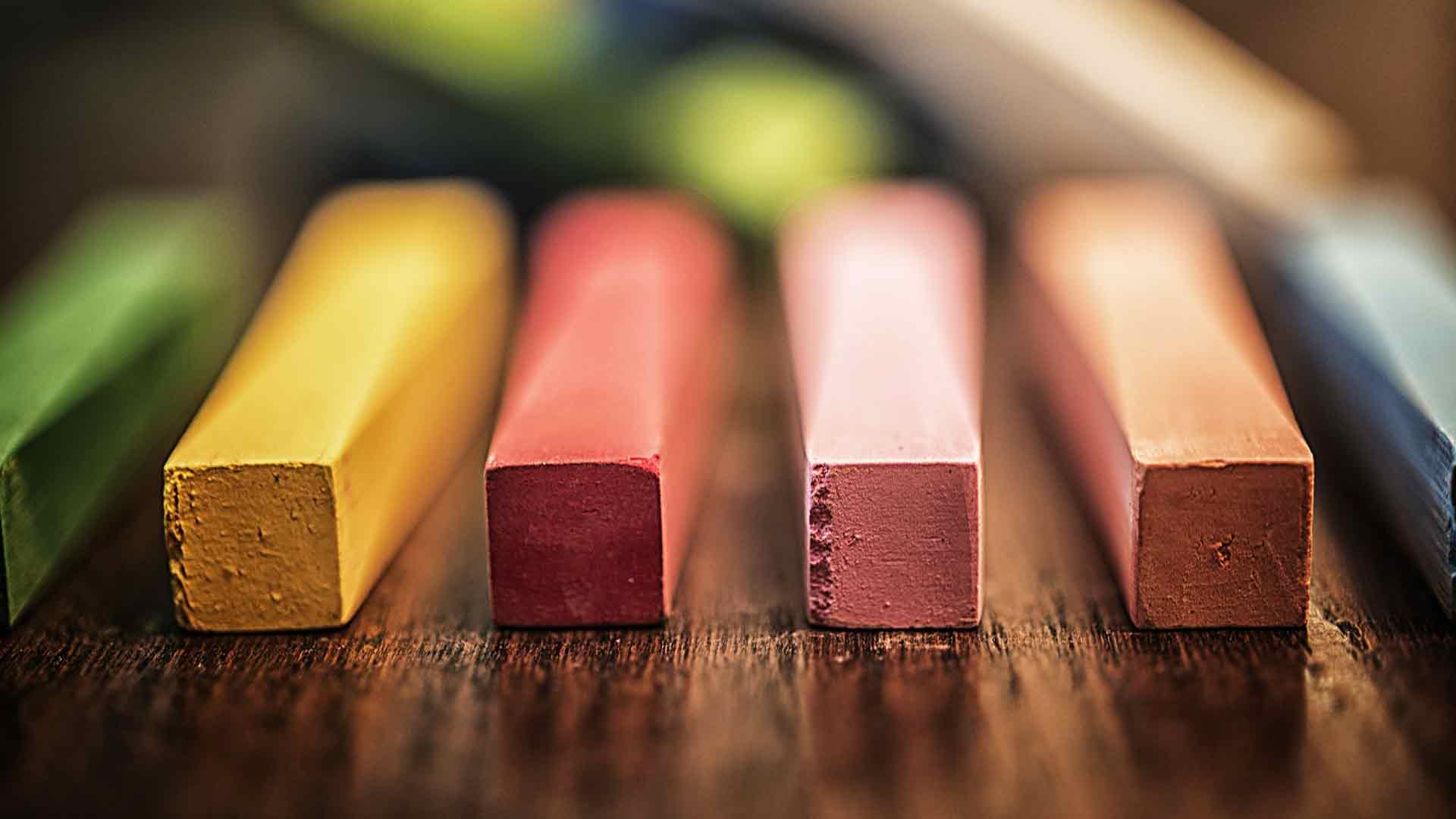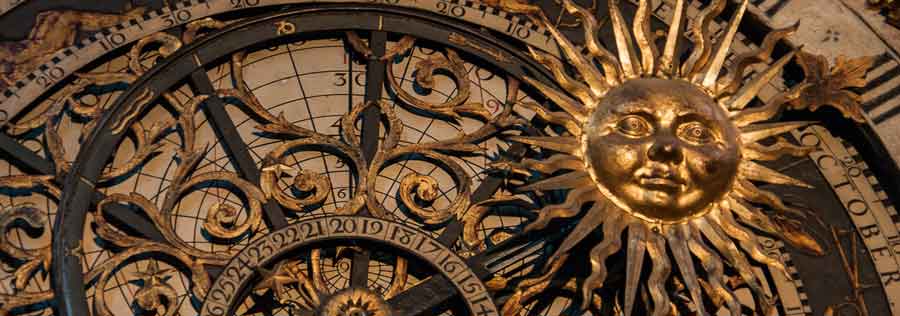

Art Media is the material used by an artist, composer or designer to create a work of art.
Wikipedia Quick Links
to "lists" of the types of art and the materials used:
Drawing │
Ceramics │
Electronic │
Film │
Glass │
Installation │
Metal │
Painting │
Paper │
Photography │
Printmaking │
Sculpture │
Textiles
A pencil │ is an implement for writing or drawing constructed of a narrow, solid pigment core inside a protective casing which prevents the core from being broken and/or from leaving marks on the user’s hand during use. Pencils create marks by physical abrasion, leaving behind a trail of solid core material that adheres to a sheet of paper or other surface. They are distinct from pens, which instead dispense liquid or gel ink onto the surface being marked. Con't... Wikipedia │ Video: History of the Pencil │ Metropolitan Museum of Art
A colored pencil │
is an art medium constructed of a narrow,
pigmented core encased in a wooden cylindrical case.
Unlike graphite and charcoal pencils,
colored pencils’ cores are wax-
or oil-based and contain
varying proportions of pigments,
additives, and binding agents.
Water-soluble (watercolor) pencils and
pastel pencils are also manufactured
as well as colored leads for mechanical pencils.
Colored pencils vary greatly
in terms of quality and usability;
concentration of pigments in the core,
lightfastness of the pigments,
durability of the colored pencil,
and softness of the lead are
some indicators of a brand’s quality and,
consequently, its market price.
Con't...
Wikipedia │
Google Arts & Culture
Video: 12 Genius Drawing Hacks for Colored Pencils │ Kirsty Partridge Art
A pastel │
is an art medium in the form of a stick,
consisting of pure powdered pigment and a binder.
The pigments used in pastels are the same as
those used to produce all colored art media,
including oil paints; the binder is of a neutral hue
and low saturation.
The color effect of pastels is closer
to the natural dry pigments
than that of any other process.
Pastels have been used by artists since the Renaissance,
and gained considerable popularity in the 18th century,
when a number of notable artists
made pastel their primary medium.
Con't...
Wikipedia │
Metropolitan Museum of Art
Video: Sennelier Oil Pastels - Made for Picasso │
n 1949, Parisian painter Henri Goetz
approached Henri Sennelier
the famous artist materials manufacturer,
about creating a wax colour stick
for his friend Pablo Picasso.
Picasso, a long-time Sennelier customer
and a frequent visitor to their store
across the street from the Louvre museum,
was looking for a medium that could be used freely
on a variety of surfaces without fading or cracking. │
Jackson's Art Supplies
Video: A Beginner's Guide to Soft Pastels │ Learn how to understand the qualities of soft pastel with artist Michael Howley in this beginner's guide to pastel tutorial. │ ArtTutor.com
Acrylyc painting │
is a fast-drying paint
made of pigment suspended
in acrylic polymer emulsion.
Acrylic paints are water-soluble,
but become water-resistant when dry.
Depending on how much the paint
is diluted with water, or modified with
acrylic gels, mediums, or pastes,
the finished acrylic painting
can resemble a watercolor,
a gouache or an oil painting,
or have its own unique characteristics
not attainable with other media.
Acrylic paint is regularly used for crafting,
or in art classes in schools
because it does not require any chemicals,
and rinses away with just water. Con't...
Wikipedia
Video: Acrylic Painting Ideas for Beginners │
makoccino

Watercolor │
also aquarelle, is a painting method
in which the paints are made of
pigments suspended in a water-based solution.
Watercolor refers to both the medium
and the resulting artwork.
*Watercolor painting is extremely old,
dating perhaps to the cave paintings of paleolithic Europe,
and has been used for manuscript illustration
since at least Egyptian times but
especially in the European Middle Ages.
However, its continuous history
as an art medium begins with the Renaissance.
The German Northern Renaissance artist
Albrecht Dürer (1471–1528),
who painted several fine botanical,
wildlife, and landscape watercolors,
is generally considered among the earliest
exponents of watercolor.
An important school of watercolor painting in Germany
was led by Hans Bol (1534–1593)
as part of the Dürer Renaissance.
Con't...
Wikipedia
Video: Easy Watercolor Painting Ideas For Beginners │ Kirsty Partridge Art
Fresco │
is a technique of mural painting
executed upon freshly laid,
or wet lime plaster.
Water is used as the vehicle
for the dry-powder pigment
to merge with the plaster,
and with the setting of the plaster,
the painting becomes
an integral part of the wall.
The word fresco (Italian: affresco)
is derived from the Italian adjective fresco meaning "fresh",
and may thus be contrasted
with fresco-secco or secco mural painting techniques,
which are applied to dried plaster,
to supplement painting in fresco.
The fresco technique has been employed since antiquity
and is closely associated with Italian Renaissance painting.
Con't...
Wikipedia
Video: Michelangelo & The Science of Fresco Painting | Chemistry Meets Art │ Artrageous with Nate
Video: Almost Invisible: The Cartoon Transfer Process │ Getty Museum Infrared cameras now reveal concealed drawings under the surface of many of the Renaissance's most revered paintings. Learn how this radical drawing technique was done. │ Getty Museum
Oil painting │ painting in oil colours, a medium consisting of pigments suspended in drying oils. The outstanding facility with which fusion of tones or colour is achieved makes it unique among fluid painting mediums; at the same time, satisfactory linear treatment and crisp effects are easily obtained. Opaque, transparent, and translucent painting all lie within its range, and it is unsurpassed for textural variation. Con't... Encyclopedia Britannica │ Video: Oil Paint History │ How Oil Paint Is Made │ Video: Oil Painting for Beginners │ Basic Instruction + Demo │ Florent Farges Arts
Paper │ is a thin material produced by pressing together moist fibres of cellulose pulp derived from wood, rags or grasses, and drying them into flexible sheets. It is a versatile material with many uses, including writing, printing, packaging, cleaning, decorating, and a number of industrial and construction processes. The pulp papermaking process is said to have been developed in China during the early 2nd century CE, possibly as early as the year 105 CE, by the Han court eunuch Cai Lun, although the earliest archaeological fragments of paper derive from the 2nd century BCE in China. Con't... Wikipedia │ How Paper Is Made
Printmaking │ is the process of creating artworks by printing, normally on paper. Printmaking normally covers only the process of creating prints that have an element of originality, rather than just being a photographic reproduction of a painting. Except in the case of monotyping, the process is capable of producing multiples of the same piece, which is called a print. Each print produced is not considered a "copy" but rather is considered an "original". This is because typically each print varies to an extent due to variables intrinsic to the printmaking process, and also because the imagery of a print is typically not simply a reproduction of another work but rather is often a unique image designed from the start to be expressed in a particular printmaking technique. A print may be known as an impression. Con't... Wikipedia │ Video: Pressure + Ink: Introduction to Printmaking │ The Museum of Modern Art
Digital Photography │
Digital camera, device for making digital recordings of images.
Texas Instruments Incorporated patented the first
filmless electronic camera in 1972.
In 1981 Sony Corporation brought out a
commercial electronic model,
which used a “mini” computer disk drive to store information
captured from a video camera.
As the cost of electronic components declined
and the resolution of the cameras improved,
the Eastman Kodak Company began selling
professional digital cameras in 1991.
Kodak and Apple Computer,
which supplied the software for
transferring the digital images
to a personal computer, introduced
the first consumer model in 1994. Con't...
Encyclopedia Britannica │
Windland Smith Rice │
Nature's Best Photography Annual Competition │
Smithsonian's National Museum of Natural History
Video: Easy Photography Beginner Tutorial │
Understanding Photography with Simple Words │ Serge Ramelli Photography
Video: How to Compose a Beautiful Photograph │ Get an in-depth and highly interactive tutorial on how to take better photographs in this video lecture taught by award-winning National Geographic photographer Joel Sartore. This video is #9 in a series of 24 videos called "Fundamentals of Photography". │ The Great Courses Plus
Repoussé │ method of decorating metals
in which parts of the design are raised in relief
from the back or the inside of the article
by means of hammers and punches;
definition and detail can then be
added from the front by chasing or engraving.
The name repoussé is derived from the French pousser,
“to push forward.”
This ancient technique, which has been used
extensively throughout the history of metalworking,
achieved widespread popularity in Europe during the
16th, 17th, and 18th centuries. Con't...
Encyclopedia Britannica │
Video: Saints and Heroes: Art of Medieval and Renaissance Europe │
Step back in time and
immerse yourself in the spiritual,
domestic, and chivalric worlds of the
Middle Ages and Renaissance. │
Arms & Armor at AIC │
Repoussé at Google Arts & Culture
Video: Renaissance Sun Tooling Foil Acrylic Resist │
Lesson at UnitedArtandEd
Sculpture │
is the branch of the visual arts that operates in three dimensions.
It is one of the plastic arts.
Durable sculptural processes originally used carving
(the removal of material) and modelling
(the addition of material, as clay), in stone, metal,
ceramics, wood and other materials but,
since Modernism, there has been an almost
complete freedom of materials and process. Con't...
Wikipedia
Video: Watch a Masterpiece Emerge
from a Solid Block of Stone │
National Geographic
Watch a sculpted portrait come to life in this mesmerizing short from production company Eyes & Ears.
Video: Hand-Made Tiles │ Black Rock Studio │ Watch a sculpted portrait come to life in this mesmerizing short from production company Eyes & Ears.
Bas Relief Sculpture: │ There are different degrees of relief depending on the degree of projection of the sculpted form from the field, for which the Italian and French terms are still sometimes used in English. The full range includes: high relief (alto-rilievo, haut-relief), where more than 50% of the depth is shown and there may be undercut areas, mid-relief (mezzo-rilievo), low-relief (basso-rilievo, or French: bas-relief /ˌbɑːrɪˈliːf/), and shallow-relief or rilievo schiacciato, where the plane is only very slightly lower than the sculpted elements. Con't... Wikipedia

Below, is a small sample of
information links
coordinated with
video playlists.
Each link and video thumbnail takes you to the category on the Resource page.
Once there, activate the links.
Resources
Creative Commons Public Domain
0 1.0 Universal 0 1.0) License